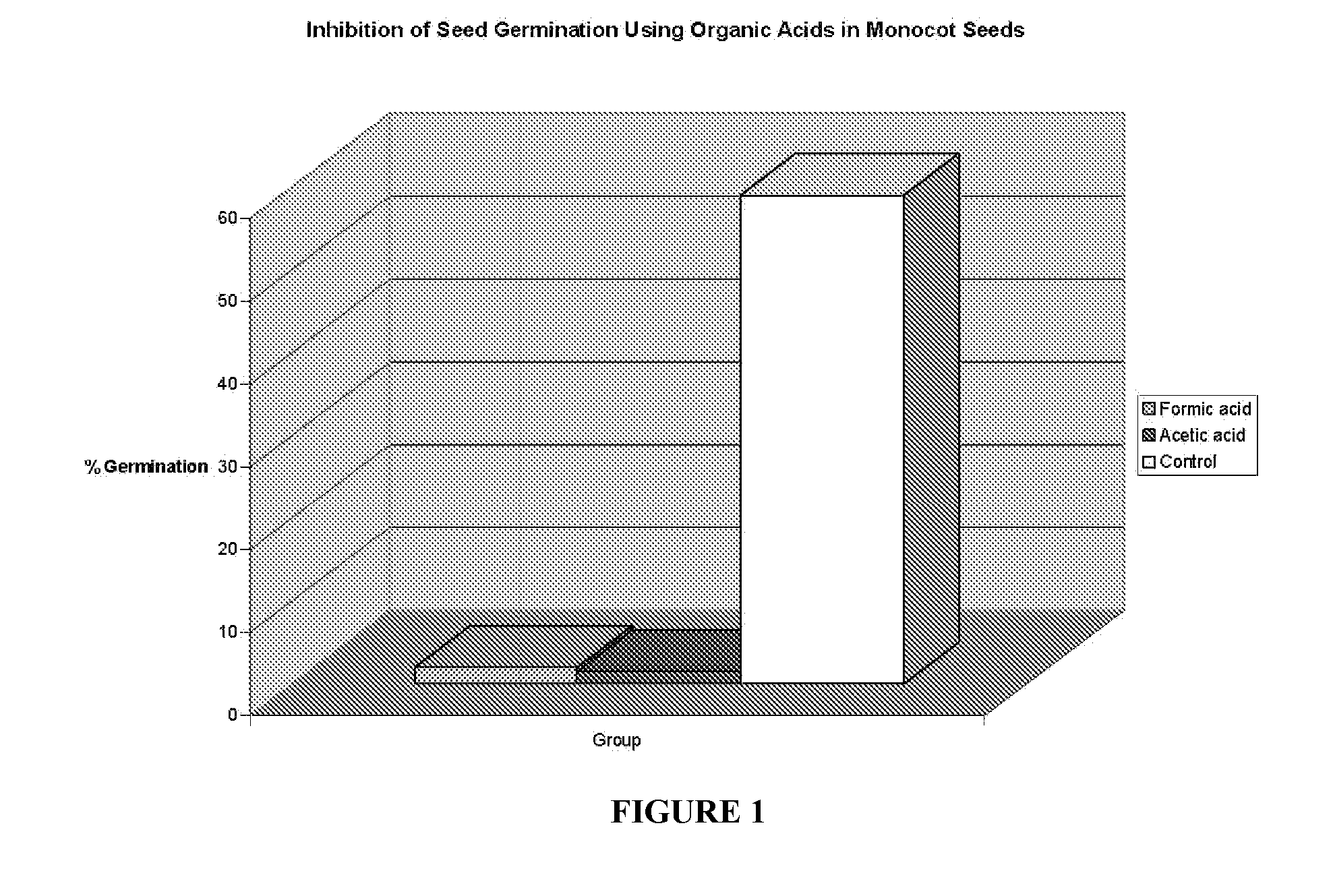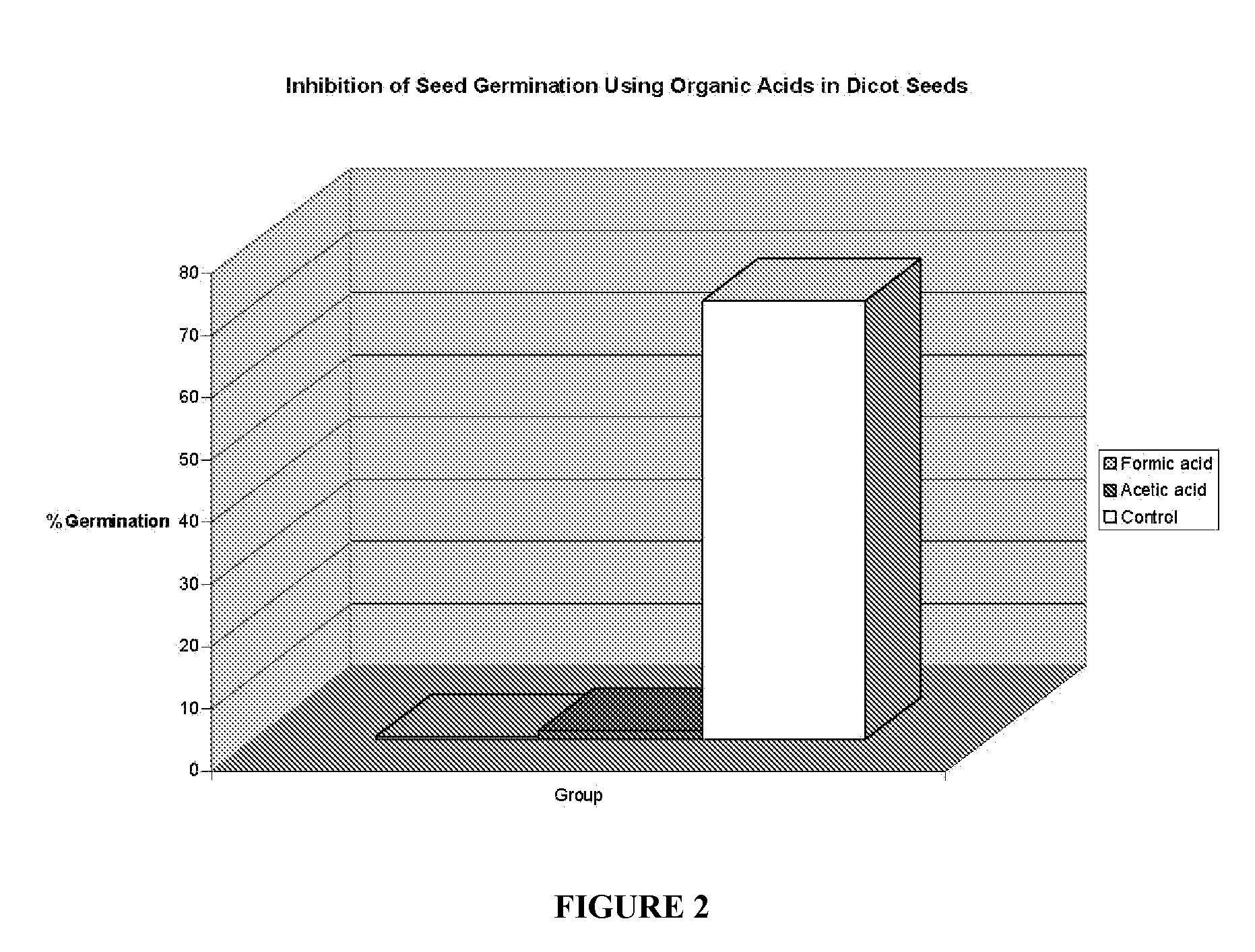Formic acid as an herbicide
a technology of formic acid and herbicide, which is applied in the field of compositions and methods of controlling weeds, can solve the problems of not controlling the root system responsible for plant regeneration, and achieve the effect of not harming the environmen
- Summary
- Abstract
- Description
- Claims
- Application Information
AI Technical Summary
Benefits of technology
Problems solved by technology
Method used
Image
Examples
example 1
[0033] Numerous natural compounds were screened for their ability to inhibit the germination of seeds. A single seed was placed in each well of a 96-well plate followed by a solution of each compound in water at both 0.5% and 0.1%. Germination was monitored at varying intervals, depending on the germination time in the control groups for the particular seed being used in the study. The ability of formic acid to inhibit germination of seeds was recognized and verified in both dicots (radishes) and monocots (wheat).
example 2
[0034] Numerous natural compounds were screened for their ability to inhibit the germination of dicot seeds. A single seed of Lactuca sativa (lettuce) was placed in each well of a 96-well plate followed by a solution of each compound in a stepwise dilution series from 25% to 0%. Germination was monitored daily. Based on this screening study, the threshold value for formic acid to inhibit germination of seeds was determined at 0.0013%.
example 3
[0035] A high-throughput 96-well assay was used to test the efficacy of formic acid as a post-emergence, non-selective herbicide. Seedlings of Lactuca sativa (lettuce) were grown in 96-well plates under continuous light. Formic acid was added on the seedlings at a 5x-dilution series from 20% to 0%, and the minimum concentration needed for killing the seedling was recorded the next day. According to the results, formic acid at a concentration of 0.8% was able to kill the lettuce seedling, whereas formic acid at a concentration of 0.16% was not harmful for the plant.
PUM
 Login to View More
Login to View More Abstract
Description
Claims
Application Information
 Login to View More
Login to View More - R&D
- Intellectual Property
- Life Sciences
- Materials
- Tech Scout
- Unparalleled Data Quality
- Higher Quality Content
- 60% Fewer Hallucinations
Browse by: Latest US Patents, China's latest patents, Technical Efficacy Thesaurus, Application Domain, Technology Topic, Popular Technical Reports.
© 2025 PatSnap. All rights reserved.Legal|Privacy policy|Modern Slavery Act Transparency Statement|Sitemap|About US| Contact US: help@patsnap.com



